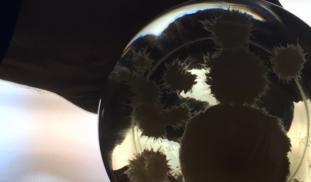78
0
0
Like?
Please wait...
About This Project
The Precautionary Group
We've discovered a few new mushrooms thriving in this harsh environment of land-disposed sewage sludge in Snoqualmie, Washington. We're testing these mushrooms for new antimicrobial properties. Microbes that survive exposure to toxic sewage sludge engage adaptive mechanisms that transform toxins into secondary metabolites.
More Lab Notes From This Project

Browse Other Projects on Experiment
Related Projects
Toward ethical and affordable antivenom solutions: Can anti-toxin be animal cruelty-free?
Snakebite envenoming causes over 100,000 deaths annually, yet current antivenoms depend on animal plasma...
Microplastics: Can engineered enzymes remove microplastics from the human body?
Polyethylene terephthalate (PET) microplastics have been detected in human blood and tissues, and linked...
Shutting down cancer’s recycling system with exosome-based therapy
Pancreatic cancer is one of the deadliest cancers because its cells survive by recycling their own components...

